People have a long history of using the force of water flowing in streams and rivers to produce mechanical energy. Hydro energy was one of the first sources of power used for electricity generation.
Hydro energy production constitutes the most extensively exploited renewable energy type all over the world. In the early 21st century, hydroelectric power was the most widely utilized form of renewable energy.
It is renewable depending on the hydrological cycle with the minimum greenhouse gas emission into the atmosphere. In 2019 it accounted for more than 18% of the world’s total power generation capacity.
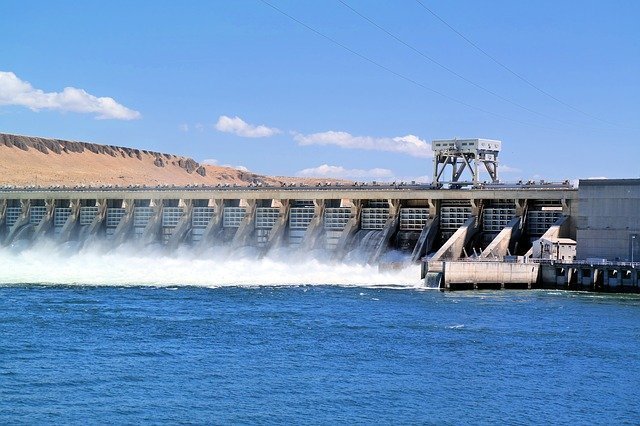
What is Hydro Energy
Hydroelectric power is a form of energy that controls the power of water in motion when flowing over a waterfall to generate electricity. It is also known as hydropower.
It converts the kinetic energy of falling or fast-flowing water into mechanical energy. Hydro energy is a form of sustainable energy production.
It Depends on the Water Cycle
Hydropower is using water to power machinery or makes electricity. Water constantly moves through a vast global cycle, evaporating from lakes and oceans, forming clouds, precipitating as rain or snow, then flowing back down to the oceans.
The energy of this water cycle, which is drive by the sun, uses to produce electricity. Hydropower uses fuel water that is not reduced or used up in the process. Because the water cycle is an endless, constantly recharging system, hydropower is considered renewable energy.
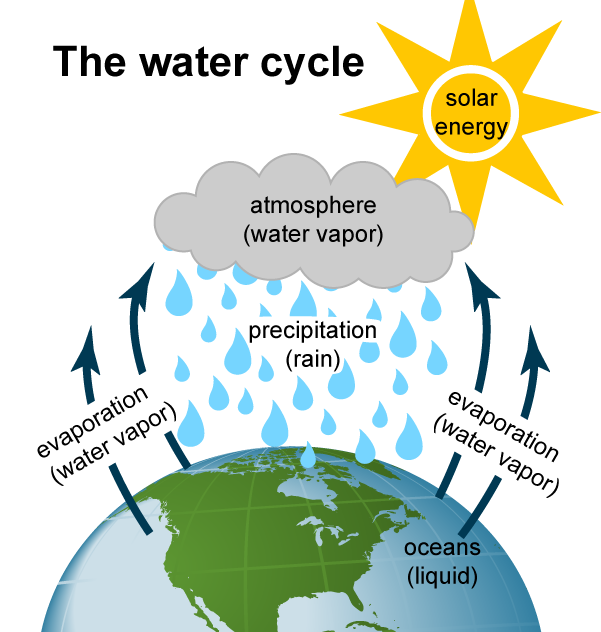
How Hydro Power Created
The source of hydroelectric power is water. Hydroelectric power plants generally are located on or near a water source. Most hydroelectric power plants have a water reservoir, a gate or valve to control how much water flows out of the tank, and an outlet or place where the water ends up after flowing downward.
Water gains potential energy just before it spills over the top of the dam or flows down a hill. The potential energy is converted into kinetic energy as water flows downhill. The water uses to turn the blades of a turbine to generate electricity. And it is distributed and consumed in homes, businesses, buildings, and industries.
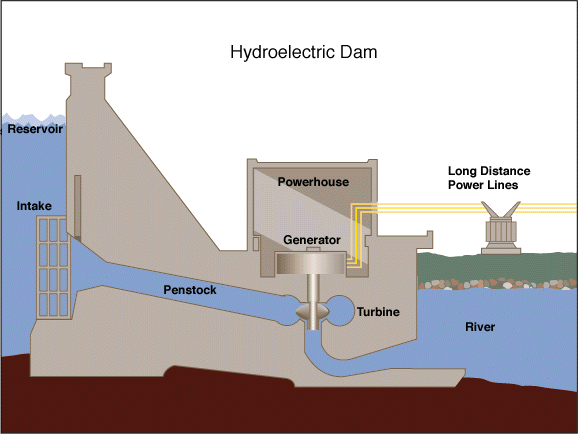
Hydro Energy World Wide Usage
Hydroelectric energy is the most commonly-used renewable source of electricity. Today, hydroelectricity provides about 16% of the world’s electricity. Globally, more electricity is producing using hydropower than nuclear fission or petroleum. However, natural gas and coal are producing more electricity globally than hydroelectricity. More than 150 countries produce some hydroelectricity, although around 50% of all hydropower produce by just four countries: China, Brazil, Canada, and the United States.
China is the largest producer of hydroelectricity. And Brazil, Canada, the United States, Russia and India are the five largest producers after China.
Approximately 71% of all of the renewable electricity generated on Earth is from hydropower.
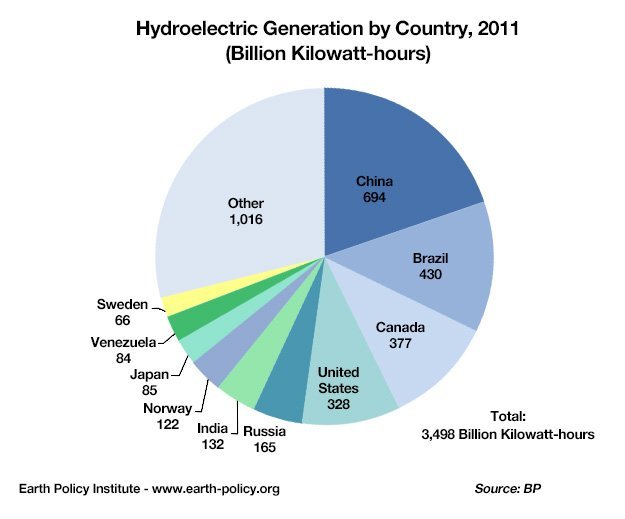
Hydro Energy World Wide Potentials
Once hydroelectric dams are ready, they operate very cheaply and provide a reliable electricity supply except in extreme drought. Developed countries that have substantial hydro resources have, by and large, already utilized those resources to produce electricity.
In these countries, hydropower dominates the electricity supply system shown in the chart below. Norway leads the pack here. The amount of hydropower it produces is not huge in an absolute sense (it is the world’s seventh-largest producer). But all electricity generated in Norway comes from hydropower. Brazil and Canada are also highly dependent on hydropower. Other large hydro producers, such as China and the United States, produce much less hydroelectricity relative to the size of their overall power sectors.
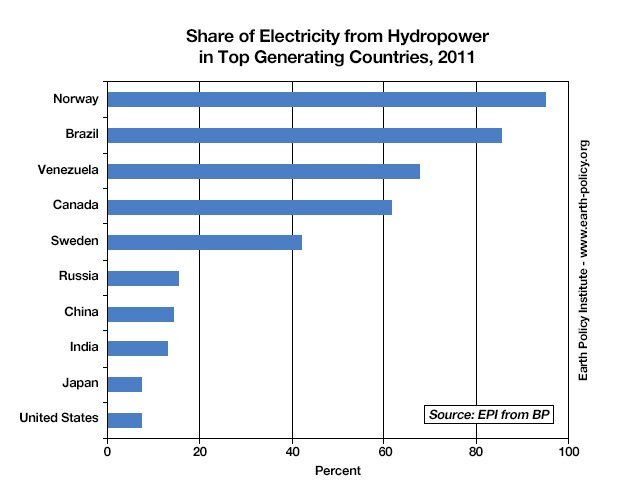
Approximate Percentages:
United States, 8%, Japan, 8%, India, 12%, China, 15%, Russia, 16%, Sweden, 42%, Canada, 62%, Venezuela, 68%, Brazil, 88%, Norway, 95%
Type of Hydro Energy
Impoundment Facility
A dam is constructed to hold back water and raise its level, forming a reservoir used to generate electricity or water supply. Water is released from the dam when more energy is required. Once the water releases, gravity dominates, and the water flows downward through the turbine. As the blades of the turbine spin, it powers a generator.

Diversion Facility
This type of plant is unique because it does not use a dam. Instead, it uses a series of canals to channel flowing river water toward the generator-powering turbines.

Pumped Storage
Another type of hydropower called pumped storage works like a battery, storing the electricity generated by other power sources like solar, wind, and nuclear for future use. The plant stores energy by pumping water uphill from a pool at a lower elevation to a reservoir located at a higher elevation. When there is high electricity demand, water located in the higher pool is released. As the water flows back down to the lower reservoir, it turns the turbine to generate more electricity.
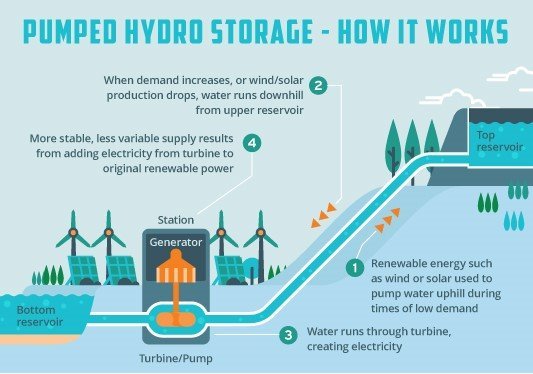
Uses of Hydro Energy
Hydroelectricity is one of the most important sources of energy in the world. Hydroelectricity is one of the cheapest and non-polluting sources of power. Though, it can cause ecological damage initially. It has better climate compatibility than other forms of energy like nuclear, coal, gas and others.
Advantage of Hydro Energy
Renewable Resource
One of the main advantages of hydroelectricity is that water is almost everywhere. And can be used to produce hydroelectric energy. Because of the water cycle, it is a renewable resource. Allowing us to conserve limited and non-renewable resources for other uses.
Reliable and Highly Efficient
One of the biggest pros of hydroelectric energy is that it is one of the most efficient energy resources in the world. Consider that solar power is only a maximum of 30-36% efficient, wind power only 25-45% efficient, and coal power is only 33-40% efficient. These methods pale in comparison to hydro energy, which is up to 90% efficient at converting water into electricity.
Flexible
Unlike other forms of power like solar, wind, or coal, hydroelectric energy is constant. The flow of water to produce energy can easily alter to meet supply demands. It means that electricity is available when it’s needed, which reduces energy waste.
Safe
Compared to many other forms of energy production, dams that produce hydro energy have been fairly safe over the years. Most issues or problems that have occurred are the result of poor construction and low safety standards in older dams.
Disadvantage of Hydro Energy
Environmental Impact
Perhaps the main disadvantage of hydroelectric energy is the impact it can have on the environment. To build the dam, new roads and power lines that disrupt the environment should be installed. Dams also often create reservoirs that flood large areas and displace natural habitats.
Displace People
Reservoirs not only displace animals from their habitats, but they also displace people. This disadvantage of hydroelectric energy can have quite a large impact on communities. People who have lived in an area their whole lives may force to move.
Expensive
Another disadvantage of hydroelectric energy is the expense required to build a dam in the first place. Although they don’t cost much to operate, the time it takes for a dam to pay for itself can vary widely.
Limited Reservoirs
Although water is an unlimited resource, the conditions necessary to build a dam are limited. It is a disadvantage of hydroelectric energy because it means you cannot simply build a dam anywhere you want.
Not Always Safe
Despite a lack of combustible fuel, dams still offer dangers of their own. Construction accidents, as well as dam failure, can result in injury, loss of life, flood, etc.
A Better Energy Solution
While there are certainly pros and cons of hydroelectric energy, there’s no denying that it’s an efficient means of producing energy for a sustainable future. Hydropower is one of the most effective renewable sources of energy. But environmental concerns and limitations can affect its global reach.
Despite that, according to the International Energy Agency (IEA), hydropower could be tripled by 2050 if all available resources finish.
